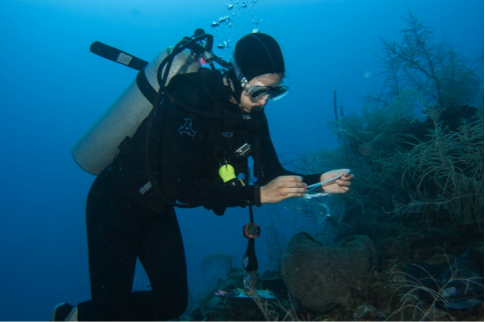Today's post comes from Pete.
As I return for my seventh expedition to Carrie Bow Cay, I have come to know a bit of what to expect. The food will be delicious, thanks to our wonderful chef, Martha. The island will be home to a large population of hermit crabs; largely unseen during the day, but prowl every inch of the island after sunset. Our station managers, Greg and Joanne, will be extremely helpful and diligent. I know the dive sites, the fish, and the pace of the work.
A double-crested cormorant dries its wings in the sun after a swim.
Birds are a familiar sight on Carrie Bow. The cay is 10 miles from the mainland and makes a convenient shelter for birds that have exhausted their reserves so far from land. This trip did not disappoint, as a cormorant made Carrie Bow its home for the week.
I also know certain aspects of the trip will be unexpected, and completely out of our control. The weather can be quite chaotic. Last June we weathered the brunt of Tropical Strom Barry, while this trip we had tranquil seas and sunny days.
A scorpionfish blends into the bottom along the transect.
It is always difficult to predict what I will see underwater. Performing the transect dives, I keep a record of the fish that I see during the dive. As an unexpected side effect of this project, these data have become a bit of a journal to me. Beyond pure scientific value, it’s a verifying mechanism for my own memory - a way for me to compare one trip to another. Having this information lets me take a look back in time, and see the fish population as it was.
It is interesting to see the changes in fish populations and how that deviates from my expectations. I see familiar faces; fish that I have recorded over a large number of transect dives. Sometimes there are more (or less) of the fish than I expect to see. Populations ebb and flow, not at a glacial pace, but from year to year. Sometimes the usual suspects are there, but not in an area or habitat that I am expecting to see them. Creatures usually associated with deep water creep up the reef, making homes where they were previously excluded. For me, it is exciting to observe on each dive what has changed, what is unusual, and doesn’t fit with my expectations.
















.jpg)
.jpg)
.jpg)



